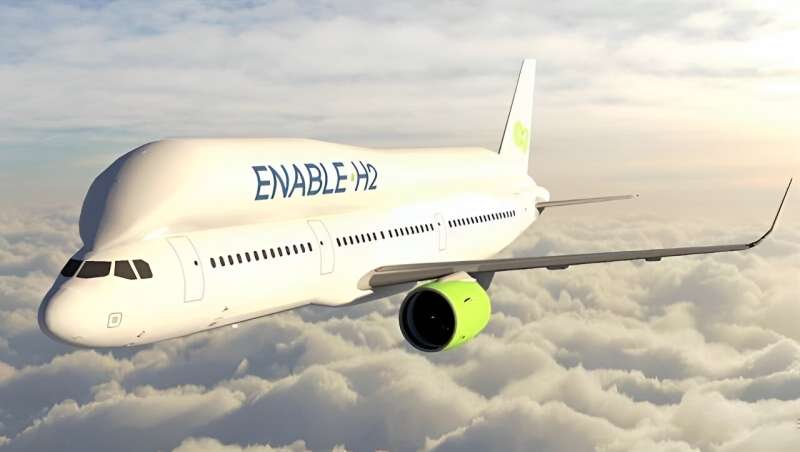Hydrogen-powered flight is set to revolutionize air travel, providing greater opportunities for fossil-free transportation. Technological advancements in this field are accelerating rapidly. New studies from Chalmers University of Technology in Sweden indicate that by 2045, almost all air travel within a 750-mile radius (1,200 km) could be conducted using hydrogen-powered aircraft. Furthermore, with a novel heat exchanger currently under development, this range could be extended even further.
“If everything falls into place, the commercialization of hydrogen flight can go really fast now. As early as 2028, the first commercial hydrogen flights in Sweden could be in the air,” says Tomas Grönstedt, Professor at Chalmers University of Technology and Director of the TechForH2 competence center.
Chalmers’ wind tunnels house cutting-edge facilities where researchers test airflow conditions, developing more energy-efficient engines that pave the way for safe and efficient hydrogen flight for heavy-duty vehicles. Short and medium-range hydrogen-powered flights are closest to being realized. A recent study published in the International Journal of Hydrogen Energy from Chalmers shows that hydrogen-powered flights could meet 97% of all intra-Nordic flight routes and 58% of the Nordic passenger volume by 2045.
The researchers assumed a maximum flight distance of 750 miles, using an existing aircraft model adapted for hydrogen power. Led by doctoral student Christian Svensson, the study also introduced a new fuel tank designed to be lightweight, well-insulated to maintain the super-cold liquid hydrogen, and efficient.
Heat exchangers are critical for hydrogen aviation, ensuring the fuel systems remain lightweight by keeping hydrogen in liquid form at approximately -250°C. By recovering heat from the hot exhausts of jet engines and cooling the engines in strategic locations, these exchangers improve efficiency. Chalmers researchers have been developing a novel heat exchanger for several years, now patent-pending by partner GKN Aerospace. This technology leverages hydrogen’s low storage temperature to cool engine parts and uses waste heat from exhaust gases to preheat the fuel before combustion.
“Every degree increase in temperature reduces fuel consumption and increases range. We showed that short- and medium-haul aircraft with the new heat exchanger could reduce fuel consumption by almost 8%. Considering the maturity of aircraft engine technology, this is a very good result from a single component,” says Carlos Xisto, Associate Professor at Chalmers and co-author of the study published in Applied Thermal Engineering. The researchers also predict that further optimization of this heat exchanger technology could improve the range of a regular Airbus A320 by up to 10%, equivalent to the Gothenburg-Berlin route (approximately 450 miles).
Developing solutions for hydrogen aviation involves collaboration across governments, universities, and private companies. In Sweden, the Swedish Hydrogen Development Center (SHDC) unites key players, including industry leaders and academic experts. At a recent SHDC seminar, Chalmers researchers showcased their work, and several commercial companies highlighted significant investments in hydrogen flights over the coming years.
While technology is advancing swiftly, challenges remain in securing the large investments required and developing the necessary infrastructure, business models, and partnerships for hydrogen production, transport, and storage. A full transition is expected to need around 100 million tons of green hydrogen annually.
“There are industry expectations that 30%–40% of global aviation will be powered by hydrogen by 2050. For years to come, we will likely need a mix of aircraft powered by electricity, less environmentally harmful e-jet fuel, and hydrogen. But every hydrogen-powered aircraft reduces carbon dioxide emissions,” says Tomas Grönstedt. TechForH2 is well-positioned to tackle the hydrogen challenge, with a budget of SEK 162 million (equivalent to USD 15.5 million), supporting various research areas linking hydrogen and heavy transport.
By Impact Lab


